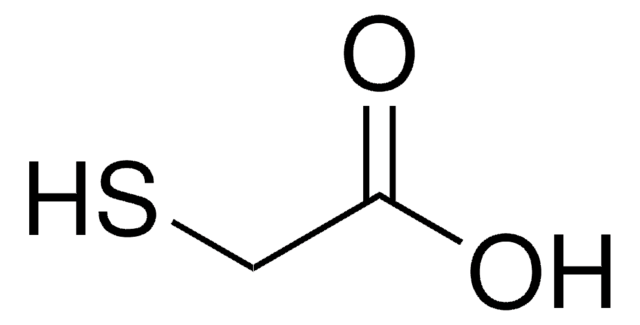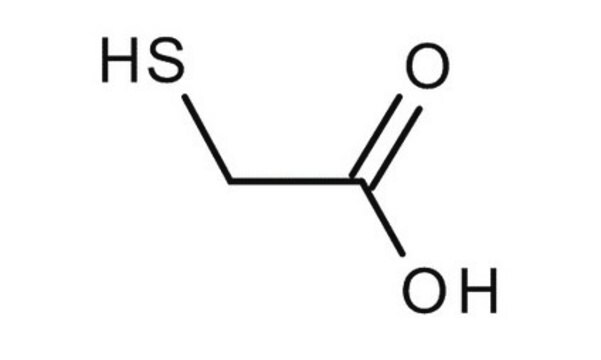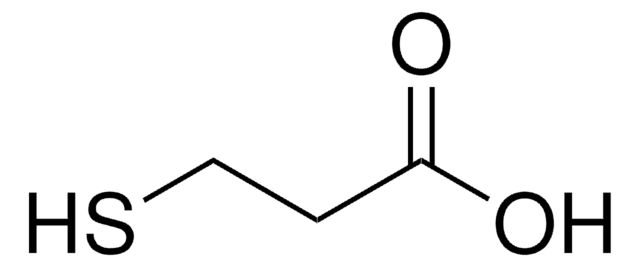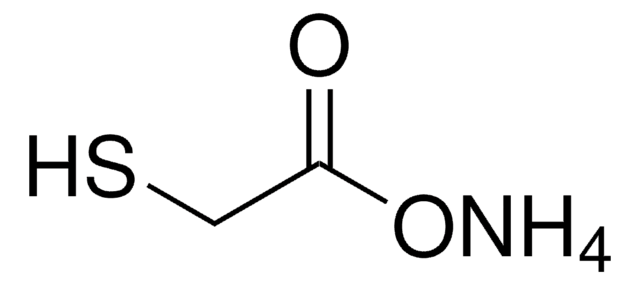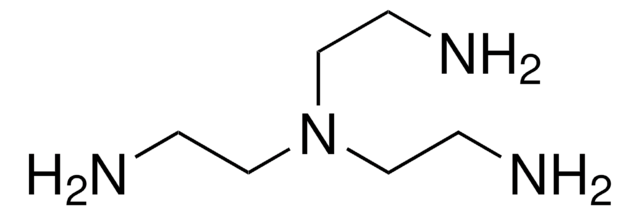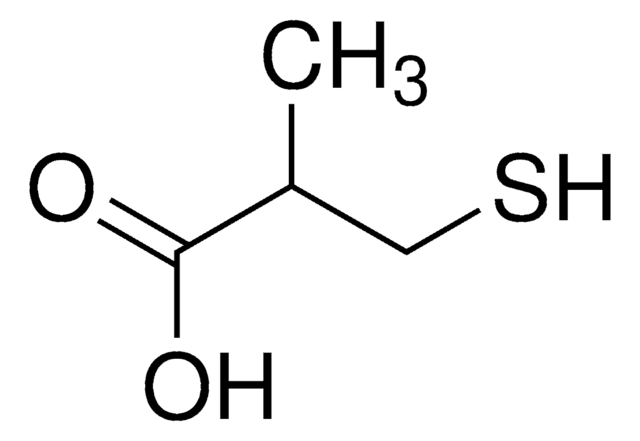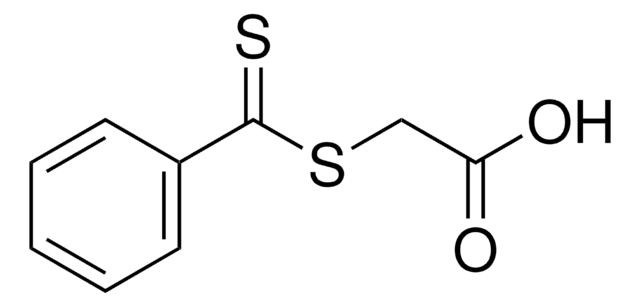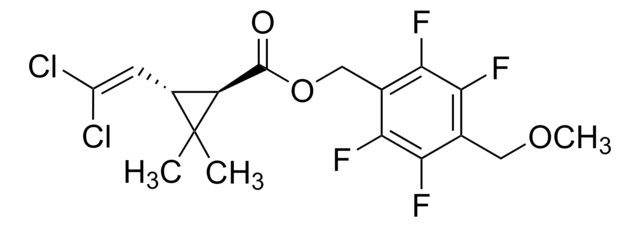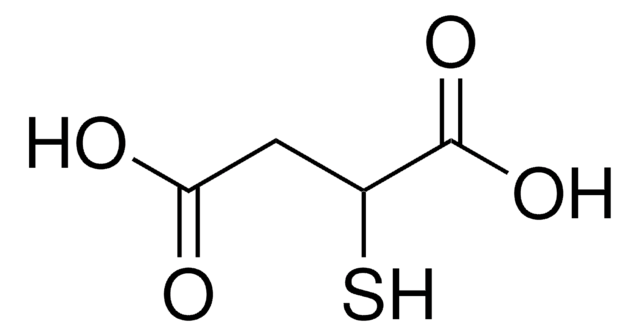528056
Thioglycolic acid
≥99%
Synonym(s):
Mercaptoacetic acid
About This Item
Recommended Products
vapor density
3.2 (vs air)
Quality Level
vapor pressure
0.4 mmHg ( 25 °C)
Assay
≥99%
autoignition temp.
662 °F
availability
available only in EU
refractive index
n20/D 1.505 (lit.)
bp
96 °C/5 mmHg (lit.)
mp
−16 °C (lit.)
density
1.326 g/mL at 20 °C (lit.)
functional group
carboxylic acid
thiol
storage temp.
2-8°C
SMILES string
OC(=O)CS
InChI
1S/C2H4O2S/c3-2(4)1-5/h5H,1H2,(H,3,4)
InChI key
CWERGRDVMFNCDR-UHFFFAOYSA-N
Looking for similar products? Visit Product Comparison Guide
Application
- A sulfur source and stabilizing agent to synthesize nanocrystalline metal sulfides via hydrothermal reaction. TGA also controls the morphology and particle sizes of nanocrystalline metal sulfides during the process.
- An effective agglomeration suppressant for the agglomeration of sulfurized mineral pyrite.
- A reactant to prepare 2,3-disubstituted-thiazolidin-4-one derivatives by one-pot cyclo-condensation reaction with various aldehydes and amines using supported protic acid catalyst.
- A capping or stabilizing agent to synthesize CdTe quantum dots with controllable photoluminescence wavelengths.
Legal Information
Signal Word
Danger
Hazard Statements
Precautionary Statements
Hazard Classifications
Acute Tox. 3 Dermal - Acute Tox. 3 Inhalation - Acute Tox. 3 Oral - Aquatic Chronic 3 - Eye Dam. 1 - Skin Corr. 1B - Skin Sens. 1B
Storage Class Code
6.1C - Combustible acute toxic Cat.3 / toxic compounds or compounds which causing chronic effects
WGK
WGK 3
Flash Point(F)
266.0 °F - closed cup
Flash Point(C)
130 °C - closed cup
Personal Protective Equipment
Choose from one of the most recent versions:
Already Own This Product?
Find documentation for the products that you have recently purchased in the Document Library.
Customers Also Viewed
Our team of scientists has experience in all areas of research including Life Science, Material Science, Chemical Synthesis, Chromatography, Analytical and many others.
Contact Technical Service